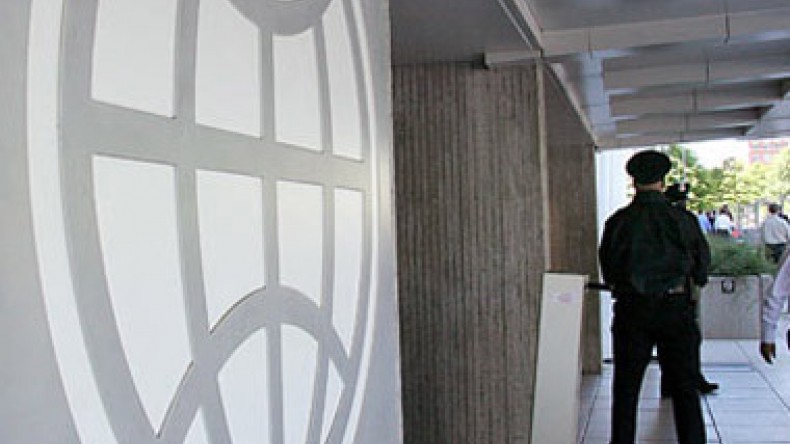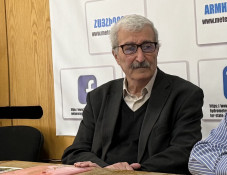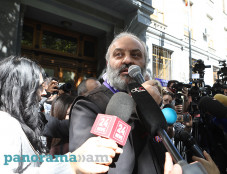
Marking 20th anniversary of Republic of Armenia joining World Bank
The World Bank today marks the 20th anniversary of its cooperation with the Republic of Armenia, a partnership that has made an important contribution to improving lives of the Armenian children, women, and men. A celebration event is attended by many counterparts, including high level officials, representatives of business and banking sectors, project implementation units, civil society organizations, and media outlets.
Since independence, in the early 1990s, Armenia’s economy has undergone a profound transformation. Sustained growth, ambitious reforms, and external inflows of capital and remittances have created a market-oriented environment that is highly receptive to trade, capital, and technological innovation.
Starting with an initial $12 million Operation designed to assist the economic reforms, the World Bank has remained a firm development partner, through 56 operations committing over $1, 6 billion to Armenia, throughout the last two decades.
“This is a significant milestone for the Bank and we are proud to have been serving Armenian people,” the World Bank Regional Director for South Caucasus Henry Kerali said. “Armenia has come a long way in the last two decades. Thanks to sustained reform efforts by the Government since early 1990s, the country has managed to increase incomes for its citizens, improve transport and infrastructure, and curtail poverty. However, the country continues to face social and economic challenges, in the aftermath of the recent global and Euro zone crisis. Throughout all these changes, the World Bank Group constantly engaged with Armenia – forging a solid partnership through good times and bad.”
According to the Country Client Survey conducted in the fall of 2012, the World Bank’s overall effectiveness in Armenia is rated 7.6 (out of 10 point scale); the respect with which the Bank treats stakeholders in the country is rated 8.6; the staff preparedness is graded at 8.3. Looking toward the future, respondents on average rated the potential role to be played by the Bank in terms of Armenia’s development landscape at the level of 8.3. The rating on the technical quality of the Bank’s knowledge stands at 7.6.
“The Client Survey outcomes are encouraging for us, the World Bank Armenia Country Team, especially prior to the preparation of the next Country Partnership Strategy (CPS) covering the period FY2014-17”, Country Manager for Armenia Jean-Michel Happi said. “Our staff is our main asset and the key to success of the Bank Group’s financing, knowledge sharing, and advisory services.”
The current Country Partnership Strategy for Armenia, which comes to an end in mid-2013, has been developed in the aftermath of the global economic crisis of 2009. The World Bank has supported the Government by envisaging total IDA/IBRD allocation of US$640.6 million with IDA share equaling to US$277 million. On top of the lending operations the Bank has 16 active trust fund operations totaling to about $15 million, as well as providing sector diagnoses and strategies that underpin the Bank’s dialogue and possible interventions.
Currently, there are 14 active projects financed by the Bank. Here are some results achieved so far.
Under the Lifeline Roads Improvement Project (LRIP) the most isolated communities in Armenia are benefitting from improved roads, opening potential avenues for tourism industry and economic revival. The intervention has resulted in rural communities reconnected to their urban centers/markets. Since 2009, 332 km of roads linking villages to main highways have been rehabilitated while creating over 34,000 person-months of employment in rural areas.
The quality, reliability, and efficiency of water supply services have improved through the Municipal Water (MWP) and Municipal Water and Wastewater (MWWP) projects for Yerevan and outside the capital city. Over 332,000 households in Yerevan have benefitted from improvements in the duration of water supply and water quality. In capital city, the average number of hours on daily basis goes over 21 hours, while for other beneficiary communities it has increased from an average of six hours per day in 2004 to over 15 hours per day in 2012.
The original Irrigation Rehabilitation Emergency Project (IREP) reduced water loses between primary intake and secondary structure interface on average by 15-16 percent due to rehabilitated 89.4 km of all identified sections of Armavir and Talin main canals. The intervention has also contributed to the creation of 11,379 man-month temporary jobs. It could led to estimated 2,400 agricultural jobs, dealing with the cultivation of high-value crops. As a result of this intervention, 8000ha of land could be returned to irrigation. The on-going Additional Financing for Irrigation Rehabilitation Emergency Project (AF IREP) aims at the rehabilitation of 50 kilometers of selected main and 60km secondary canals, reducing water loss between primary intake and the on-farm system from 23 to 11 percent.
The transmission line connecting two key generation centers - Hrazdan Thermal Power Plant and Vorotan Cascade of hydropower plants, serving large electricity consumers in the central-eastern part of the country, will be replaced under the Electricity Supply Reliability Project (ESRP), thus, increasing the reliability and capacity of the transmission network. The line was constructed in 1956–58 and has been in service since then.
The Geothermal Energy Project (GEP) has already completed the preliminary economic and financial assessment of previously identified Karkar site’s potential, which combined with a number of technical studies, will be used prior to exploratory drilling.
By supporting energy efficiency investments in 120 schools, hospitals and other public facilities, the Energy Efficiency Project (EEP) will develop, test and disseminate replicable and sustainable models for energy efficiency service provision and stimulate the market by creating demand for relevant equipment and services.
So far under the Community Agricultural Resource Management and Competitiveness (CARMAC) Project 49 Pasture Users’ Associations (PUAs) have been established in communities along with 31 pasture management plans that have been completed with 18 being in the process. This would be evidenced through improved productivity and sustainability of the pasture/livestock livelihood systems in 55 communities.
Under the Access to Finance for Small and Medium Enterprises (AFSME) Project 6000 SMEs have received loans in the amount of $85 million USD for development projects through 15 local banks and financing organizations. As of end-2012, loans have been provided cumulatively to SMEs across all regions, operating in the trade, agricultural, production, and service sectors for both investment and working capital needs. The original amount for AFSME was $50 million USD. However, it has reached the current level of financing through the revolving fund created under this project.
The Armenia Social Investment Fund (ASIF) III Project has so far successfully completed 233 community infrastructure micro-projects (community-cultural centers, schools, kindergartens, health care centers, potable water supply and irrigation systems) and created 447,000 person-days of employment, as well as generating US$ 7.23 million in wage income.
Eight regional medical centers (MCs) in Kotayk (Hrazdan MC), Tavush (Ijevan MC), Armavir (Armavir MC), Ararat (Ararat MC), Syunik (Goris MC), Aragatsotn (Aparan MC), Gegհarkunik (Gavar MC), and Gyumri (Medical Center of Shirak) with overall 642,100 population — were renovated and constructed, as well as provided with modern medical equipment and furniture under the Second Health Modernization Project.
Newsfeed
Videos






























